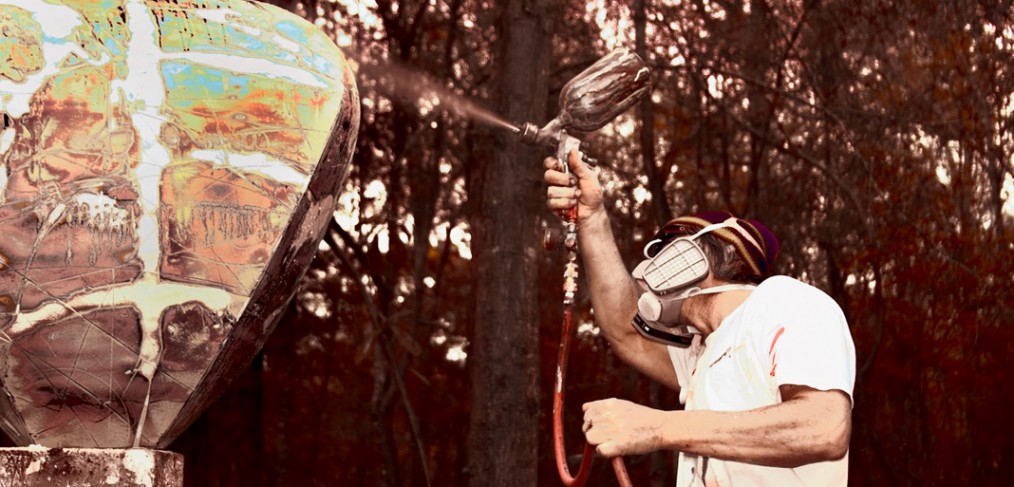
A Self Taught Artist
By Allys Palladino-Craig – DIRECTOR | Florida State University Museum of Fine Arts
A native of New York, Paul Tamanian has lived in Tallahassee, Florida since receiving his degree in interior design from Florida State University. Longing for more tactile involvement in the arts, he became– not surprisingly– a self taught, highly innovated ceramist, selected for inclusion in dozens of solo and group exhibitions. Relentlessly forging new ground, Tamanian next turned his remarkable talents to his present medium– aluminum. He has gone on to exhibit and sell works in many prestigious galleries across the United States. In the past five years, Tamanian has exhibited with such notables as William Morris, Jim Dine, Richard Jolly and Jun Kaneko. His work has been commissioned and acquired by noted private and corporate collectors in the United States and abroad.
Artists teach themselves– and none, with more focus and dedication than Paul Tamanian. Beginning as a ceramist, he first created asymmetrical pots with soft, sloping shoulders and off centered voids, followed by elongated amphorae, often with sharply pointed bases. With clay, his surfaces were widely varied, from delicate textures and muted coloration to highly charged abstract and geometric designs. Never one to stop moving and experimenting, occasionally failing, nearly always succeeding, Tamanian moved from smooth and urbane finishes in clay to rough and direct ones, enjoying whatever bohemian freedoms were available. So too with imagery; when he turned from rounded female vessels to male ‘tusk’ form forms, he made allusions to sacred ritual items as well as to antiquities , in essence creating instant artifacts by paraphrasing fossils, zoomorphic artworks of other cultures, and even archaic drinking cups of horn.
Restless with the constraints of ceramics, Tamanian sought, and found another medium in which to express his rare talents– aluminum. He had the mechanisms for attenuated curves and for transforming planes of metal into ‘canvases’. Unfettered by the properties of clay, his metallic vessels could be pierced and stitched with laces of cable, or their razor ridged welds could be polished down to the raw material so that the seams stood in bright contrast to the riot of color and texture on flat surfaces. Almost simultaneously, his vessels opened out, evolving into sculpture and even into paintings on sheet aluminum. This is not to say he abandoned his sophisticated ‘vessel’ forms. Rather, he continues to do everything at once.
Having taken on the challenges of three dimensional painting, Tamanian’s fondness for all-over patterning recalls both the splattered color of abstract expressionism and the reductive stages of print-making. As labor-intensive as is this system of building, shaping, painting and abrading, it is the visual poetry of his surfaces that carry a distinctly contemporary flavor. Twenty first century viewers respond to microcosmic saturated colors like those found in crystal or biomorphic cells. They also respond to macrocosmic imageries like the cartography of distant planets. We have become familiar with satellite view of glacial strata on heavenly bodies, including our own earth. These phenomena are the sense of Tamanian’s new imagery. Paul Tamanian is a new millennium artist in the most adventurous mode. It will be exciting to see where he takes us next.
